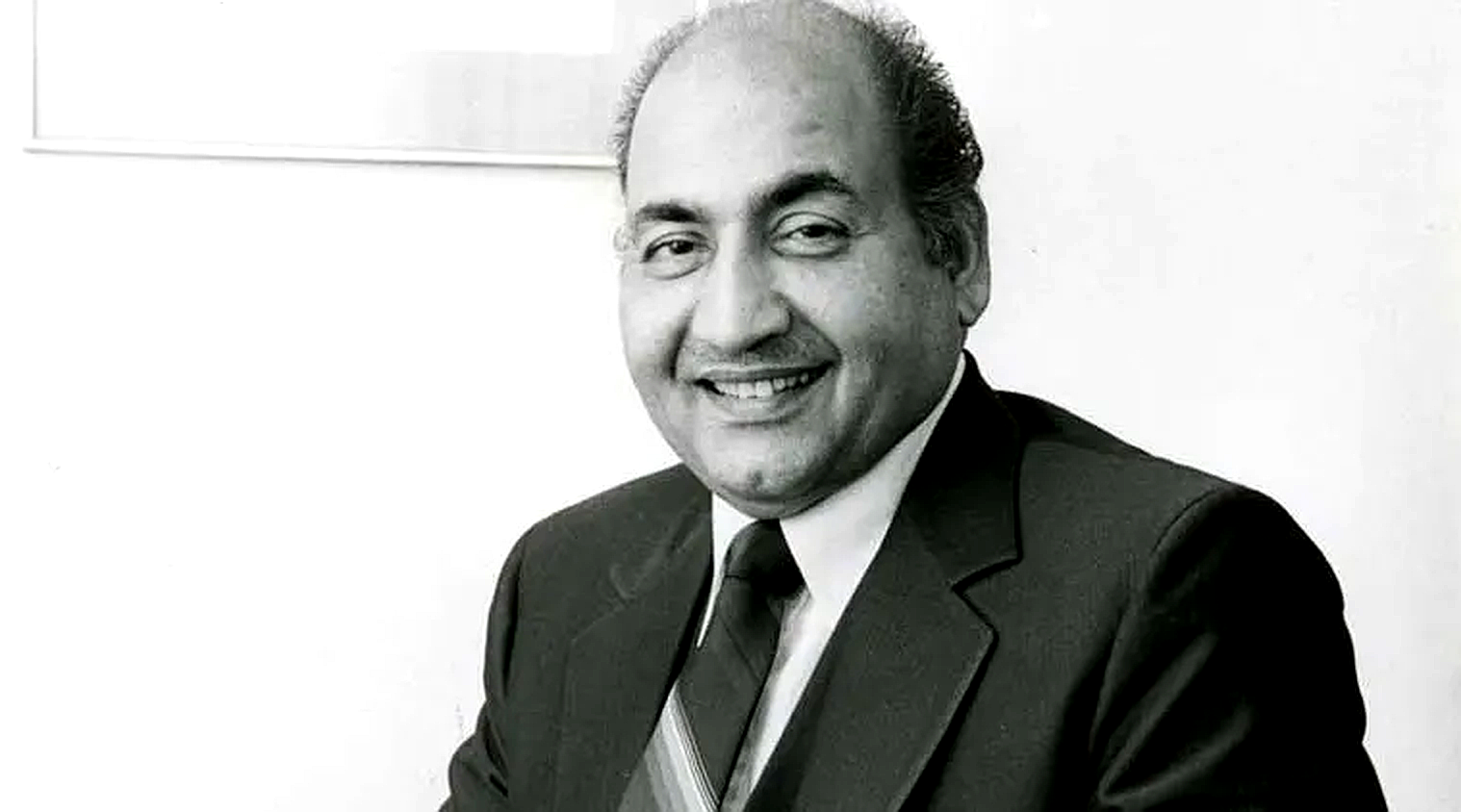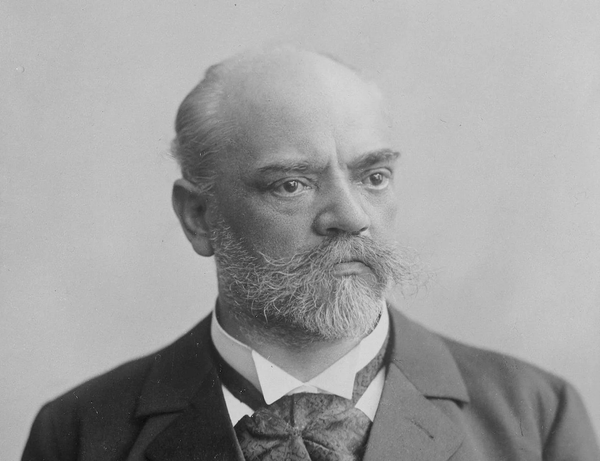Mohammed Rafi: The Eternal Voice of Bollywood
Mohammed Rafi's unmatched artistry defined the golden era of Hindi film music. From soulful ballads to playful serenades, his timeless voice transcended generations, embodying versatility, dedication, and an unparalleled connection with music and cinema.

In October 2023, during the surge of AI trends on the internet, I came across a musical duo that had created a deepfake version of the song ‘Haule Haule’ from the 2008 film Rab Ne Bana Di Jodi, originally sung by Sukhwinder Singh, with Mohammed Rafi’s voice. My first reaction as a fan of Rafi and of Bollywood classics was that this was an act of sacrilege. Upon further analysis, I understood the experiment as a music lover’s need to hear their favourite melody in one of the most beloved and memorable voices to have existed in the world of Hindi film music. Rafi’s voice has always been the voice of the hero for us; he sang for almost every leading actor in Hindi cinema from the 1950s to the ’70s. It is therefore not entirely irrational that someone would want to imagine Rafi’s malleable voice as the voice of Shah Rukh Khan or other contemporary favourites.
Rafi was among the creators of the blueprints of Hindi film music at a time when a film’s songs formed the backbone of its success. Playback singers, the stars behind the scenes, instilled emotions into songs in a manner that actors could easily lip-sync to them on-screen. Rafi’s songs stood out because of the versatile quality of his voice, unparalleled dedication to his artistic pursuit, the depth of understanding of the lyrics which he possessed, clear enunciation and an intuitive knowledge of the actor’s mannerisms. When rendered in Rafi’s vocal cords, a song emerged as a polished and perfected jewel. On 24th December 2024, the 100th birth anniversary of the legendary singer, celebrations which have been taking place around the world through the course of the year will culminate in numerous events honouring his legacy.
One voice, many actors
Hindi film music is unique for its reliance on the combined skill of the playback singer and actor to convey the right mood and emotion of a song to the audience. Rafi created the idiom of keeping the image of the on-screen actor in mind while recording and bringing in the right inflections. His method of voice modulation is often described by his collaborators and industry experts as the ‘Midas touch’. He sang for Dilip Kumar, Dev Anand, Rajendra Kumar, Shammi Kapoor, Rishi Kapoor, Dharmendra, Jeetendra, Guru Dutt, Joy Mukherjee, among many others. Equally remarkable were his songs for comedians such as Mehmood and Badruddin Jamaluddin Kazi (better known by his screen name, Johnny Walker). During the recording of the song, ‘Kaun Hai Jo Sapnon Mein Aaya’ from Jhuk Gaya Aasman, Rafi began singing only to be interrupted by director Lekh Tandon who said, “This is not a Shammi song, Rafi mian, the hero is Rajendra Kumar.” Rafi paused for a bit then changed the style completely and sang again, effortlessly matching the mannerisms of Kumar.
Shammi Kapoor considered Rafi’s voice his own and insisted on having him sing every song of his until Rafi’s untimely death in 1980. According to author Sujata Dev, Rafi sang more songs for Kapoor—a total of 190—than he did for any other actor. The first dancing hero of Bollywood, Kapoor was fastidious about being present at every song recording of his films. He would ask Rafi to add extra emphasis on certain words or have him sing some phrases in a particular way so that when Kapoor enacted them on screen, there was a seamless fusion between his performance and the song.
During the recording of ‘Aasman Se Aaya Farishta’ from An Evening in Paris, Kapoor was travelling overseas. When he learned that the song was recorded in his absence, he was livid and lashed out at director Shakti Samanta and composers Shankar-Jaikishan. They insisted that Kapoor listen to the track just once. When he did, he was shocked at the intuitive manner in which Rafi had recorded the song and asked how he did it. Rafi replied matter-of-factly, “When I was told that you were singing this song, I knew you would swing one arm here and the other arm there. And at ‘Jaaneman’, you would probably swing your legs too. So, I sang it that way.”
An exuberant performer in front of the mic, Rafi was a simple man off it. Author Rauf Ahmed writes in his book, Shammi Kapoor: The Game Changer, “The flamboyance that Mohammed Rafi acquired while singing for Shammi Kapoor belied the pious, conservative man that he had been in his private life.”
High on creativity
An acutely observant artiste, Rafi—a teetotaller—was especially known for his repertoire of drunken songs, tracks that involved singing for characters in their varying inebriated states. For example, the song, ‘Jinhen Naaz Hai Hind Par’ from Pyaasa, picturised on the protagonist Vijay, played by Guru Dutt, depicts him getting drunk out of hopelessness for the first time in his life and in the song, is observing the crumbling social values around him. Rafi begins the opening lines with a little hum: ‘Yeh kooche hmm hmm hmmm... ghar dilkashi ke’, to show how the character is at a loss for words. In contrast, the song from Leader, ‘Mujhe Duniyawalo Sharaabi Na Samjho’, picturised on Dilip Kumar, is sung for a more extroverted character who is at a party. To bring out the mischief in the character’s voice, Rafi sings in a higher register than the song from Pyaasa. He renders some of the words in a slurred cluster while adding emphasis on the ‘L’ sound to signify a drunk person who won’t stop talking.
In a similar comparative analysis, the song ‘Nain Lad Jai Hain’ from Gunga Jumna and ‘Jaan Pehechan Ho’ from Gumnaam are both high-spirited celebratory songs, one folk and the other rock ’n’ roll. Rafi has sung the former by adding more emphasis on the ‘Ha’ and ‘Ra’ syllables, typifying the dialect from Uttar Pradesh in which the song is written. For ‘Jaan Pehechan Ho’, he sings with a slight twang to suit the club performer’s personality and all the syllabic emphases remain on the same plane, matching the city dialect.
In Rafi’s singing can be found something extra that lends a timeless quality to the song. During the 1950s and ’60s, regarded the golden era of Bollywood music by many, his songs were often more popular than the film itself. Whether it was a bhajan, ghazal, classical piece, dance number or romantic song, Rafi’s vocals would be so immersed in the music, it seemed as if that particular genre was his speciality. In Dev’s book, Mohammed Rafi: Golden Voice of the Silver Screen, eminent classical vocalist, the late Jasraj said, “The basic trait that distinguishes a playback singer from a classical vocalist is not the range or ability as a singer but the voice quality and its modulation. The ultimate strength of Rafi Sahab was the amalgamation of both these qualities that helped him reign supreme in the field of playback singing.”
A composer’s delight
Rafi worked with a range of composers and just as he did with actors, he could mould his singing to each of their markedly different composing styles. Of all the music directors, his musical association with Naushad was perhaps the strongest. Naushad, a perfectionist, was often stumped by Rafi’s dedication of which he got the first glimpse during the recording of ‘Hindustan Ke Hum Hain’ for Pehle Aap. The song required the singers to tramp up and down the studio to create the effect of marching soldiers. Only after finishing the recording did Naushad notice that Rafi’s feet were bleeding. His new shoes had given him blisters. When asked why he didn’t say anything, he innocently responded, “Woh hum gaana jo gaa rahe the.” Rafi would often stay back after rehearsal was over, fine-tuning the minutiae of his singing. Baiju Bawra was among the finest early collaborations between Rafi and Naushad that fuelled a lifelong partnership. After the recording of the song, ‘O Duniya Ke Rakhwale’, Naushad returned home mighty pleased with the talented new singer only to find him sitting in his verandah at six the next morning. Rafi was unhappy with the recording and felt that he had not done justice to the composition and insisted on recording it again at his own expense. Only upon several reassurances by the master composer did he return home. Naushad was asked in a radio interview in the ’90s, “If you were to compose the best music of your life today, what would you do?” The composer had replied, “Rafi and I were one. Since he passed away, only 50 per cent of me has remained. I will pray to Allah to send Rafi for an hour, to create my best composition.”
We continue to celebrate Rafi’s legacy today because it remains unadulterated. It is the ultimate proof that there are no shortcuts to greatness. That, as an artiste, when one is rewarded with overwhelming fame, it is to be treated with gratitude and responsibility. Rafi’s artistry was the result of his dedication, sweat and blood, and countless hours spent agonising over whether or not a song touched the right emotional chords, whether listeners would remember the music for longer than the release period of the film. When listening to a playlist of classics of Hindi cinema, one may forget the name of the film, composer, actor but one cannot go wrong with the singer when a song bears the unmistakable stamp of Rafi. That is the brilliance of Mohammed Rafi.
By Vidhi Salla. This piece was originally published by the National Centre for the Performing Arts, Mumbai, in the December 2024 issue of ON Stage – their monthly arts magazine.





